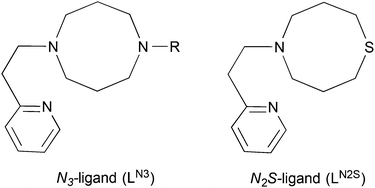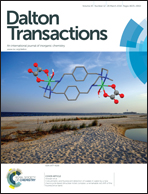A copper complex supported by an N2S-tridentate ligand inducing efficient heterolytic O–O bond cleavage of alkylhydroperoxide†
Abstract
We have recently reported a copper(II)-superoxide complex supported by an N3-tridentate ligand (LN3), which exhibits a similar structure and reactivity to those of a putative reactive intermediate involved in the catalytic reactions of copper monooxygenases such as peptidylglycine α-hydroxylating monooxygenase (PHM) and dopamine β-monooxygenase (DβM). In this study, we have synthesised and characterised copper complexes supported by a related sulphur-containing ligand (LN2S) to get insight into the notable electronic effect of the sulphur donor atom in the reaction with cumene hydroperoxide, inducing efficient heterolytic O–O bond cleavage.


 Please wait while we load your content...
Please wait while we load your content...